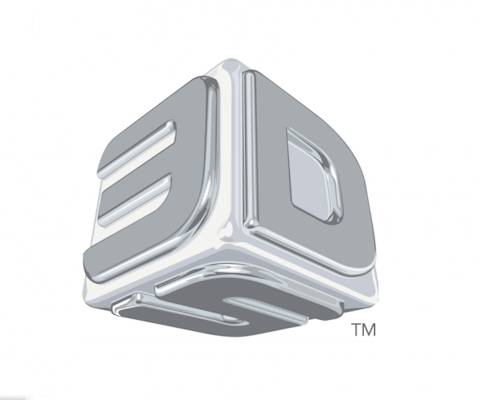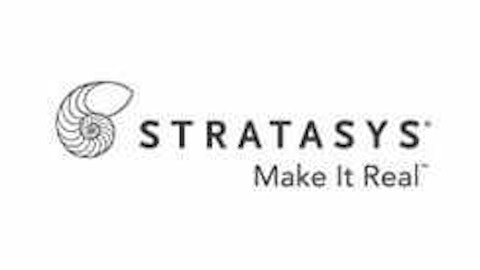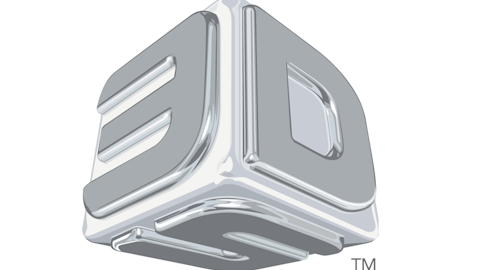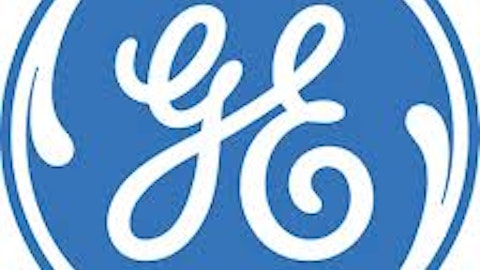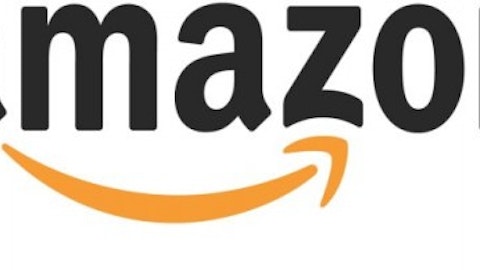Hobbyists, engineers, and even NASA are all talking about 3D printing. This new technology could enable rapid prototyping, custom sculpting, and even 3D-printed French fries, chocolate, or possibly pizza. A 3D printer might be an expensive toy for some, but the number of groundbreaking uses of 3D printing technology seems to grow weekly. Still, investors wanting to get in on the ground floor of this potentially revolutionary technology need to realize that each company involved in 3D printing has its own advantages and disadvantages.
Analyzing the major players
If you’re interested in 3D printing, then you’re probably at least somewhat familiar already with some of the major players in the industry. Three of the biggest are Stratasys, Ltd. (NASDAQ:SSYS), ExOne Co (NASDAQ:XONE) and 3D Systems Corporation (NYSE:DDD).
Stratasys, Ltd. (NASDAQ:SSYS) produces 3D printers largely for industrial use, while 3D Systems Corporation (NYSE:DDD) focuses primarily on consumer-aimed models that can be used with home computers. ExOne Co (NASDAQ:XONE) produces printers primarily for industry, boasting some very impressive clientele for a company with its experience.
Stratasys, Ltd. (NASDAQ:SSYS)
Stratasys, Ltd. (NASDAQ:SSYS) has made several strategic acquisitions recently to add to its pool of technology patents, including the purchase of Objet Ltd. in 2012 for $1.4 billion. These acquisitions gives the company more leverage in developing new 3D printing technologies which can then be developed into industrial-level printing solutions for companies and engineering firms.
The company was recently awarded a Gold Medal at the recent Concours Lépine International Inventions Exhibition for a patent it filed recently for a breakthrough prototype development material. The new material makes it possible to print a wide range of components, including mechanical, electrical and even optical parts, without having to switch materials for each piece. It could significantly reduce the time and cost associated with prototyping, since engineers could print multiple components from a single material instead of having to create each piece separately.
3D Systems Corporation (NYSE:DDD) has also made several strategic acquisitions as well, adding to its diverse portfolio of printing technologies through the purchase of companies such as Rapid Product Development Group. Currently the largest 3D printing company in the United States, 3D Systems Corporation (NYSE:DDD) enjoys a rather diverse product line based on a large number of patents that it holds.
While it is most commonly associated with the “Cube” 3D printer line, which is targeted at the consumer market, the company also produces printers and materials for industry and even medical use. The company’s printers have been used to create dental applications, hearing aid components, implantable devices and even medical and surgical models using 3D Systems Corporation (NYSE:DDD)’ Acura ClearVue ultra-clear plastic.
ExOne Co (NASDAQ:XONE) differs a bit from much of its competition, in that it doesn’t work with plastic printing as a primary medium. The majority of ExOne’s clients hail from places that require more durable printed parts such as the automotive industry and aeronautics manufacturers. Though it has sold a much lower number of printers than its peers, the company boasts major names in the industry as clients including The Boeing Company (NYSE:BA), Caterpillar Inc. (NYSE:CAT) and Tesla Motors Inc (NASDAQ:TSLA).
One reason for this is the fact that ExOne’s printers typically use metals as their primary media, giving manufacturers the ability to create precision parts out of materials such as titanium without the waste that would normally be associated with the manufacturing process. The company also boasts one of the fastest print times with its industrial printers, making them fit for not only prototyping but also for full-out production of 3D-printed parts and injection molds.
